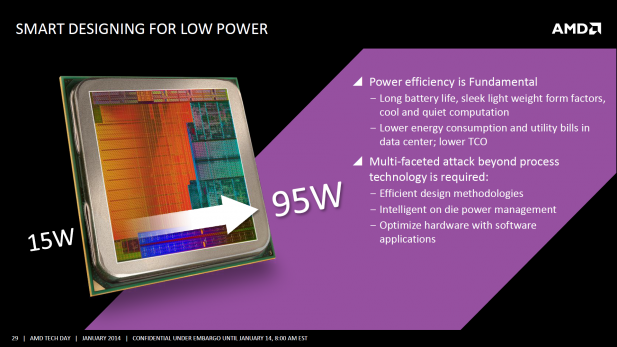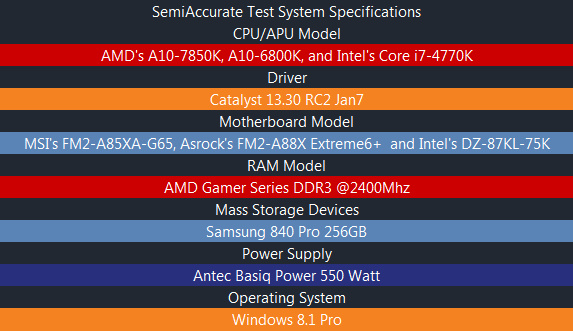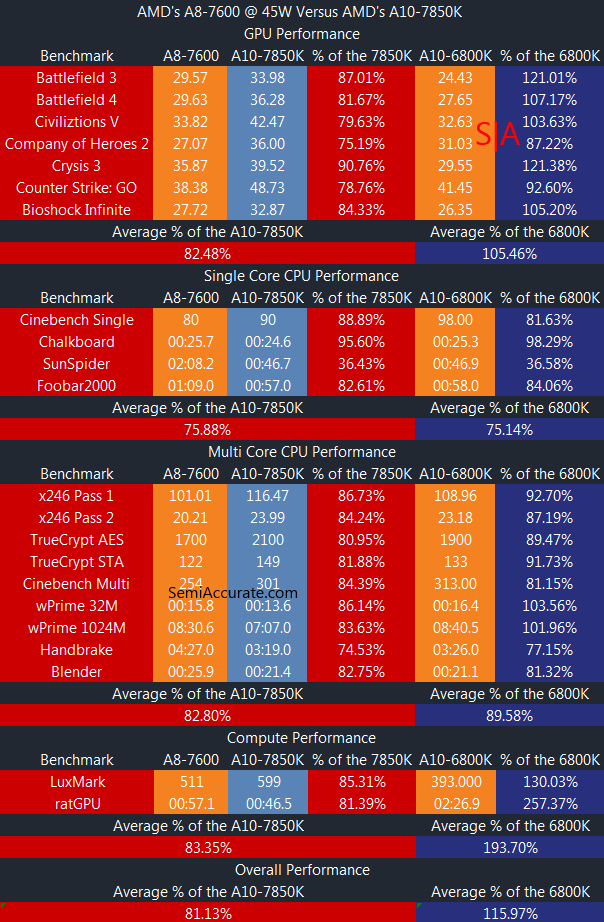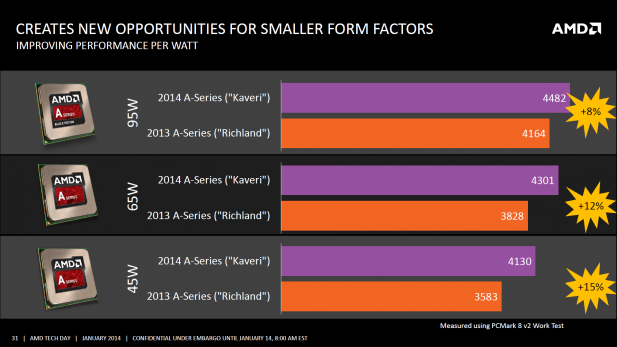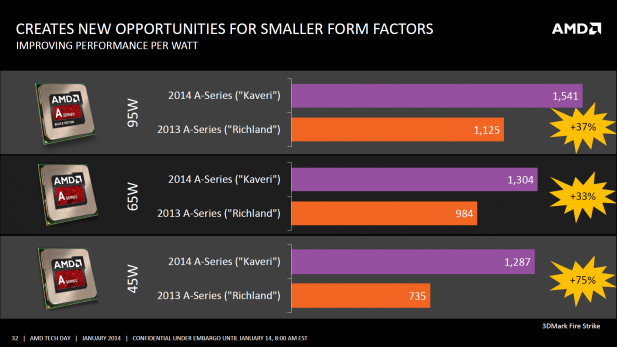 With the last few generations of desktop chips the tone of the conversation about performance has changed significantly. No longer do people stay up late into the night debating whose favorite processor is faster. Rather now we often find our selves debating more the more subtle merits of semiconductors technology and microprocessor architecture like die size, power consumption, and compute capabilities. The discussion has changed from performance per dollar to performance per watt. To that end we’ve seen a resurgence of low power desktop CPUs and APUs from both AMD and Intel. These power efficient bins are perfect for the HTPC, small form factor, and business PC markets.
With the last few generations of desktop chips the tone of the conversation about performance has changed significantly. No longer do people stay up late into the night debating whose favorite processor is faster. Rather now we often find our selves debating more the more subtle merits of semiconductors technology and microprocessor architecture like die size, power consumption, and compute capabilities. The discussion has changed from performance per dollar to performance per watt. To that end we’ve seen a resurgence of low power desktop CPUs and APUs from both AMD and Intel. These power efficient bins are perfect for the HTPC, small form factor, and business PC markets.
One of the neatest features of AMD’s new Kaveri chips is their configurable TDP which allows users to effectively select a thermal and power consumption profile for their APU. With all this in mind we took AMD’s A8-7600 APU and set it to a 45 Watt TDP down from its nominal 65 Watt TDP. We then ran the chip through our benchmarking suite so that we could compare each end of the Kaveri spectrum from the A10-7850K running at 95 Watts to the A8-7600 burning through a mere 45 Watts.
Here’s our test system’s specifications:
If you’re curious about what settings we’re using for our GPU comparison you can find screen shots of the exact settings on Mega. Otherwise take comfort that all of these games are running at 1080P on low to med settings with the exceptions of Crysis 3 which is at 720P and CS:GO which is completely maxed out.
And here are our benchmarking results:
The take away here is that desktop Kaveri retains ~80 of its performance if you cut its TDP in half. Compare these findings to the article we did on Trinity’s power scaling and you’ll see that Kaveri offers better performance per watt. This bodes well for AMD’s server and embedded efforts where performance per watt is often the most important metric.
More interestingly though our results confirm what AMD was telling us in these slides.
On both the CPU and the GPU side not only does Kaveri out perform Richland at the same TDP but that comparative performance per watt advantage continues to grows as you restrict power consumption to lower levels.
Thus we’ve discovered and confirmed Kaveri’s biggest advantage over Richland, performance per watt. At the high-end Kaveri doesn’t have a lot to offer non-gamers but once you bring TDPs down into standard small form factor or laptop ranges the performance profile of AMD’s newest chip is a lot more competitive. At the present time Kaveri’s performance appears to be a little behind, but still near what we’ve seen from Intel’s ~45 Watt Iris Pro or GT3e graphics solution.
Of course Iris Pro is an often significantly more expensive and definitely more niche product than Kaveri will ever be. So comparing the two isn’t super relevant to consumers, but it’s interesting nonetheless.
AMD’s roadmap shows a H1 2014 launch schedule for the mobile version of Kaveri so hopefully that’s not too far off. With better performance per watt and GPU performance levels that are almost too high for the market segment perhaps we’ll once again see AMD take some mobile market share. In the mean time Kaveri looks like a killer chip for HTPC and small form factor PC applications, plus AMD’s platform costs have been consistently lower than Intel’s for quite sometime. Couple Kaveri with a nice SSD and some good RAM and it will do just about anything you can ask of it and pretty quickly too.S|A
Thomas Ryan
Latest posts by Thomas Ryan (see all)
- Intel’s Core i7-8700K: A Review - Oct 5, 2017
- Raijintek’s Thetis Window: A Case Review - Sep 28, 2017
- Intel’s Core i9-7980XE: A Review - Sep 25, 2017
- AMD’s Ryzen Pro and Ryzen Threadripper 1900X Come to Market - Aug 31, 2017
- Intel’s Core i9-7900X: A Review - Aug 24, 2017
